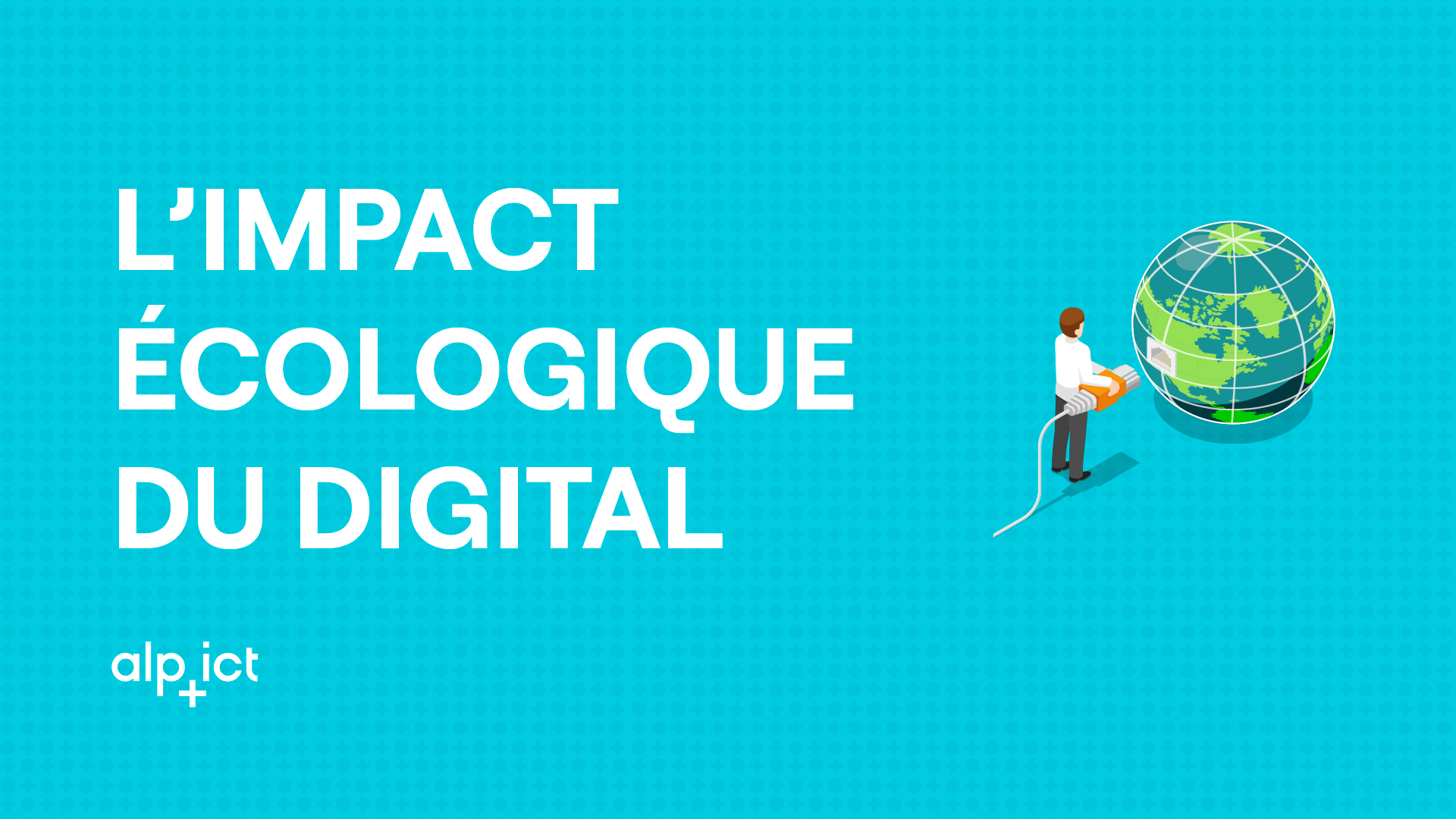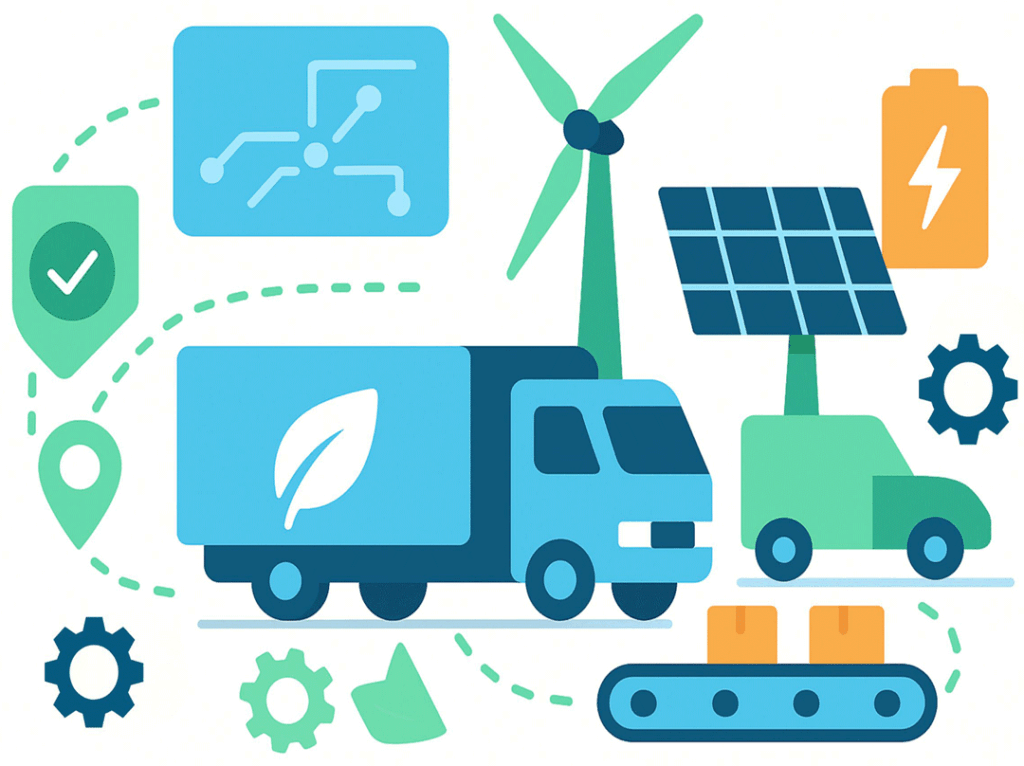The growing environmental impact of digital technology
Indicators that will double or even triple by 2025
Every year, digital technology consumes 10% of the world's electricity, uses 1,000 billion liters of water and emits 4% of greenhouse gases (GHGs) - the equivalent of global air traffic [1],[2]. The digitalization of our society and industry is only accelerating this unbridled growth. By 2025, these indicators are set to double or even triple [1]. Every two days, we produce as much information as between prehistoric times and 2003. The icing on the cake is that the amount of digital data generated doubles every 18 months. By 2037, if nothing changes, computers will consume more electricity than the world produces.
To understand such an impact, let's first define digital. This refers to all electrical and electronic equipment such as computers, laptops, smartphones, televisions, connected watches and so on. Its environmental impact derives from its manufacture, use and recycling. But how is this digital pollution generated in practice?
Manufacturing, the most polluting stage
Manufacturing is the most polluting stage, accounting for at least 70% of the device's GHGs. The MIPS unit(Material per unit per service) characterizes the ratio of raw materials used to obtain a finished electronic product. The MIPS of a smartphone is around 1100 (183 kg of raw materials used for 180g of finished product). That of a laptop is 350, or 850 kg of raw materials for 2.5 kg of finished product. The MIPS of the digital industry is the highest of all industries [3].
Secondly, the use of equipment also contributes to environmental impact. We have the impression that all our digital activity is virtual and dematerialized. But this is not true. Advertising for new technologies is misleading: it evokes the immaterial with the word virtual, or the ethereal with the word cloud. We are quickly led to forget the millions of computers, thousands of data centers and millions of kilometers of fiber optics used to transmit even a simple email. Behind the cloud's dematerialized appearance lies a very physical reality.
The physical reality behind our "virtual" activity
In the use of equipment, the main sources of pollution come from the infrastructures and data centers used to ensure the hyperavailability of content on the Internet. In 2019, there were more than 1.3 million kilometers of undersea fiber optic cables, or 32 times around the planet [4]! They link thousands of data centers around the world. On average, an e-mail travels 15,000 km before reaching its recipient!
A data center is a warehouse housing computer servers that manage the flow of data on the Internet. They store company data, documents on the Cloud, messages on social networks, facilitate site searches or direct an email to its recipient. Since servers are switched on non-stop to ensurehyper-availability, they overheat and require constant cooling. Cooling accounts for 40% of a data center's electricity consumption. A single air conditioner would be enough to cool 50 hotel rooms! [5]. But data centers are full of them. On average, a data center consumes ten times more electricity than a block of flats. In 2013, American data centers consumed 91 billion kWh, equivalent to 34 giant power plants (500 MW). By 2020, European data centers will be consuming 104 billion kWh, with annual growth of 5% [6]. On the other hand, the term Cloud refers only to data centers worldwide. Keeping a document on the Cloud is in reality the same as keeping it on a server. Finally, data center pollution is mainly due to the consumption of fossil fuel-based electricity.
Here are four examples of our daily uses of the Cloud and digital technology that have an environmental impact:
- On average, sending an email is equivalent to releasing 7g ofCO2. Yet 10 billion emails are sent every hour. In France, the environmental footprint of a 100-strong company that receives an average of 58 e-mails a day and sends 33 of an average size of 1 MB is equivalent to 13 round-trip flights between Paris and New York. [2]
- Online videos are responsible for 1% of globalCO2 emissions, equivalent to all of Spain's emissions in 2018. [7]
- In France, internet boxes left on account for 1% of national electricity consumption. [8]
Too little recycling
Finally, less than 20% of electronic devices are not recycled. Today, recycling is too complex and costly to be profitable. And yet, it is estimated that a third of the world's gold reserves are to be found in our landfills!
Despite its huge environmental impact, digital pollution remains unknown. The marketing of the Net giants does its job well. Mobile applications, to which we are addicted, prevent us from asking the right questions. The derisory price of cloud storage doesn't help. And, above all, there is no local or international legislation to control this sector.
What are the solutions?
So, how do we tackle this pollution? Firstly, it is essential to raise awareness among society, governments and industry. This is the first step in implementing an effective solution that is acceptable to all. Secondly, we need to limit our use of the cloud to a strict minimum, for example by backing up documents and e-mails locally. Then, we need to renew our screens, computers and televisions as infrequently as possible. If necessary, buy reconditioned equipment. Finally, to achieve true carbon neutrality, it's essential to take this pollution into account and set up performance indicators to monitor it, both at home and at work. An internationally-recognized certificate would provide greater motivation for the industry.
The Cloud is indeed a cloud, but a cloud ofCO2!
Bibliography
[1] - GreenIT website - Environmental footprint of the global digital economy
[2] - Document from ADEME (Agence de l'environnement et de la maîtrise de l'énergie) - Guide pratique de la face cachée du numérique (in French)
[3] - Sobriété numérique book - Frédérique Bordage - September 2019
[4] - Video from "Arte" - Le dessous des cartes - Submarine cables, the invisible war - 14/04/2018
[5] - Article Web - www.fournisseur-energie.com - Internet biggest polluter on the planet - 09/11/2020
[6] - Web article - Climatechangenews.com - "Tsunami of data" could consume one fifth of global electricity by 2025. 11.12.2017.
[7] - Web Article - VerdaMano - Digital pollution, are we talking about it? July 2019.
[8] - According to Françoise Berthoud, CNRS engineer and founder of EcoInfo





